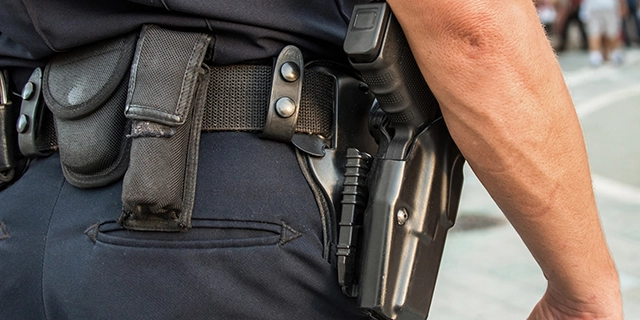
While on patrol, every officer carries specific equipment. Typically, these are furnished by the agency for which the officer works. However, there may be aspects of your first patrol that you overlook, or you may wish to modify your patrol equipment if permitted.
CAT Outdoors’s tactical gear may provide you with greater organization and flexibility while on patrol.
Think about the tools you carry with you on a daily basis and whether you need to add them to the list. Options you may not have considered may improve the efficiency of your patrol or simply ensure you are prepared for anything that may occur during your shift.
Essential Equipment for Every Officer on Duty
- Provided by your organization.
- Ensure that your service weapon is clean and loaded. Additional ammunition should be available to you.
- You may be on your feet for the bulk of the day, depending on your tasks.
- Body Armor is a need for all officers. Make sure that your armor is comfy. Prior to your first shift, you should fix any difficulties.
- This is the portable radio you carry with you. Ensure that it is charged before entering the field.
- Your department does not usually give a flashlight. You should choose a flashlight that is portable and simple to operate.
- Other Weapons may include a nightstick, a knife, or pepper spray.
Instruments That Should Be Available
- Support weapon
- Shotgun – generally furnished by the agency with which you work. Additionally, you need to have ammunition for this weapon.
- Water – dehydration can sap energy and impair concentration.
- Added handcuffs
- Medical information – sadly, things do occur. This information will be necessary for the event of an emergency, particularly if you have a medical condition.
- Change of uniform/toiletries; you never know when you may be stranded. Be prepared in case you want more clothing or simply wish to freshen yourself.
- Forms and pens – you never know when you’ll require them. It is advantageous to have extra pens, as they always seem to vanish.
Good Equipment to Carry Along
- Hand Sanitizer Camera – certainly, you can snap photos with your phone, but the phone itself may also be used as evidence. It is prudent to carry a camera as a precaution.
- Plastic bags can be utilized for a variety of purposes. Personal effects of suspects, trash, your filthy clothing. Keep a few on hand, just in case.
- You probably have a first aid pack for your vehicle, but what about for yourself? You may require eye drops, medication for muscle/joint pain, or headache medication. If you’re not feeling well, you won’t be at your best throughout long shifts.
- Clipboard and Paper; you never know when you might need to take notes. The majority of officers carry notes on their uniforms. However, there are instances when you need more. Be prepared to chronicle anything that you encounter.
Clearly, far more tools are necessary than may be expected. These are a few suggestions for your list. Each patrol, like each agency, is distinct. It is possible that you will never need these items, but being prepared is half the battle.
Defense Against Firearms
Correctly handling, storing, and employing firearms are all components of gun safety. Regular implementation of safe gun handling techniques can help reduce the number of gun-related accidents and injuries. Never pull the trigger unless you are one hundred percent sure you are prepared to fire the weapon. Always point your dog’s muzzle in a safe direction. Following these four guidelines is the simplest method to keep your firearms secure. Always maintain a watchful eye on what is occurring in the distance.
Make assured that the muzzle is pointed in a safe direction when holding a firearm. To achieve this, you must never, under any circumstances, aim the rifle at an object you do not intend to shoot. Additionally, it is prudent to avoid anything that moves. Act only when you are completely prepared to do so. As a precaution against unintended emissions, the weapon should be emptied when not in use. As a result, both illicit and inadvertent use has decreased significantly.
It is imperative to store a handgun in a secure position while it is not in use, and only the owner should have access to that location. It is essential to have a solid understanding of both your objective and your immediate surroundings. If you cannot see what lies beyond the objective, you will be unable to shoot at anything other than the chosen target.
Prioritizing one’s own safety is the responsibility of anyone who handles a firearm, regardless of ownership. Follow these four gun safety guidelines if you wish to keep yourself and others safe from the dangers of firearms.
The Most Dependable Way To Determine Whether A Gun Is Loaded
The most reliable method for determining whether a firearm contains ammo is to inspect the chamber. Before firing the cannon, verify that it is pointed in a safe direction. After the magazine is removed, the action can commence. Assume the weapon is loaded if you observe it firing and take the proper safety precautions. This will safeguard you. Even if there is no bullet remaining in the chamber, you should still proceed with extreme caution. Always treat a firearm as though it were loaded when handling it.
Disarming a Firearm Procedures
There is no such thing as a risk-free weapon. Even if you do not own a pistol, it is essential to know how to disarm one in an emergency. This could save your life in the event of an accident or severe assault.
For properly deactivating firearms, two methods exist. Ensure that the magazine has been removed from the weapon before proceeding. This state is inactive until the magazine is replaced. Remove the firing pin from its socket in the gun’s firing pin and set it aside for the time being. The weapon cannot be effectively used until the magazine is reloaded.
If you are unclear about how to disarm a firearm, seek the assistance of a trained professional. There are a number of methods available for teaching gun safety.
How to Fire a Firearm Without Injuring Yourself
In addition to the three safety requirements that must always be observed when working with weapons, a few more precautions must be taken. A weapon should always be handled with the utmost caution. Guns were never intended for children, and no one under the age of 18 should be permitted to own or carry a firearm.
To find out more, please visit www.catoutdoors.com.








